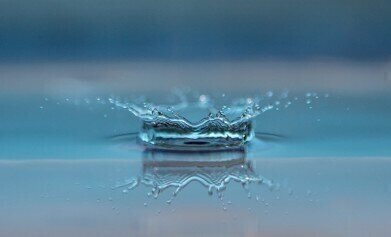Water/Wastewater
An Introduction to Wastewater Quality Indicators
Feb 05 2015
Water is an essential component of life and we probably don’t think about where our water comes from until it is not there. The water we use is constantly recycled — by nature using the water cycle and by humans using our treatment plants — it is a finite resource, we cannot make water.
Water is known as the universal solvent because of its ability to dissolve a vast array of substances. Whilst this makes it ideal as a solvent for cleaning our clothes — it does mean that wastewater is good at dissolving compounds harmful to the environment. Strict regulations govern the discharge of wastewater to our rivers and streams and in the UK the overarching regulation is the European Union legislation protecting water-bodies from untreated sewage — the Urban waste water directive (91/271/EEC).
Wastewater Quality Indicators
Laboratory analysis is used to assess the quality of the wastewater and to determine if it is safe to be discharged back into the environment — but there are natural indicators as to the cleanliness of a water supply.
The EU directive specifies the analysis to be carried out and recommends the appropriate method depending on the type of wastewater and where it is being discharged. Let’s take a closer look at some of the requirements.
Biological Oxygen Demand (BOD)
Streams, rivers and lakes produce and consume oxygen naturally. At a constant temperature a healthy water supply would be in oxygen equilibrium — gaining oxygen from the atmosphere and from aquatic plants due to photosynthesis, and losing oxygen due to respiration by aquatic animals, chemical reactions in the water and decomposition.
Wastewater often contains organic materials that can be decomposed by microorganisms, using oxygen as this happens. If the wastewater contains too much organic material and is discharged into a stream it can cause a drop in the oxygen content of the stream as the microorganisms decompose the organic material.
The amount of oxygen consumed by the microorganisms in breaking down the waste is known as the BOD. So by monitoring the BOD of the wastewater, we can make sure that too much organic material is not discharged.
Chemical Oxygen Demand (COD)
This is similar to BOD in that it measures how much oxygen will be removed from the clean water by the discharge of wastewater, but this considers the reactions of oxidizable chemicals (nitrates and sulfates) rather than organic matter.
Physical Characteristics
Two of the physical criteria that have to be met before wastewater can be discharged back into the environment are:
- Temperature Discharged water must be at a temperature close to the temperature of the receiving water as many organisms can only survive within a narrow temperature range.
- Dissolved Solids Refers to material that can be dissolved or suspended in the wastewater. Dissolved solids can indirectly and directly affect aquatic animals by reducing light levels and clogging gills in fish.
The scale of the problem of wastewater is illustrated in this new £200m scheme to clean wastewater in Liverpool.
Events
Aug 24 2025 Stockholm, Sweden and online
Aug 27 2025 Busan, South Korea
Sep 02 2025 Mexico City, Mexico
Sep 02 2025 Mexico City, Mexico
Sep 09 2025 Moscow, Russia





-from-Landia-are-on-their-way-to-Estonia.jpg)







